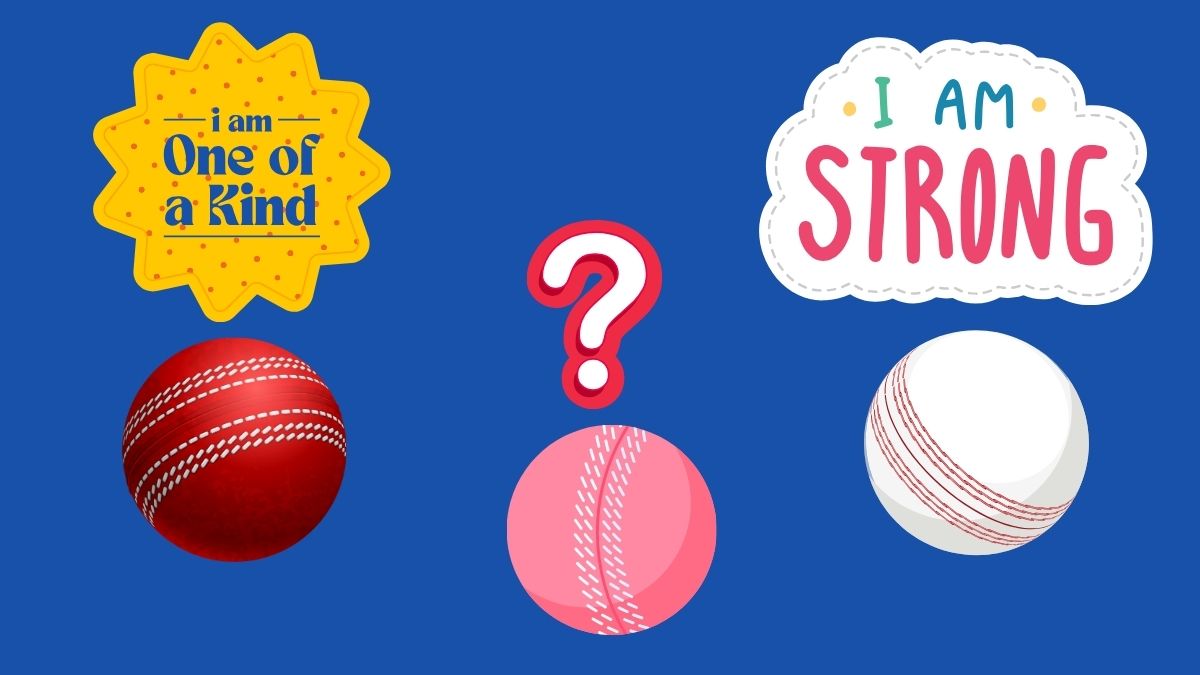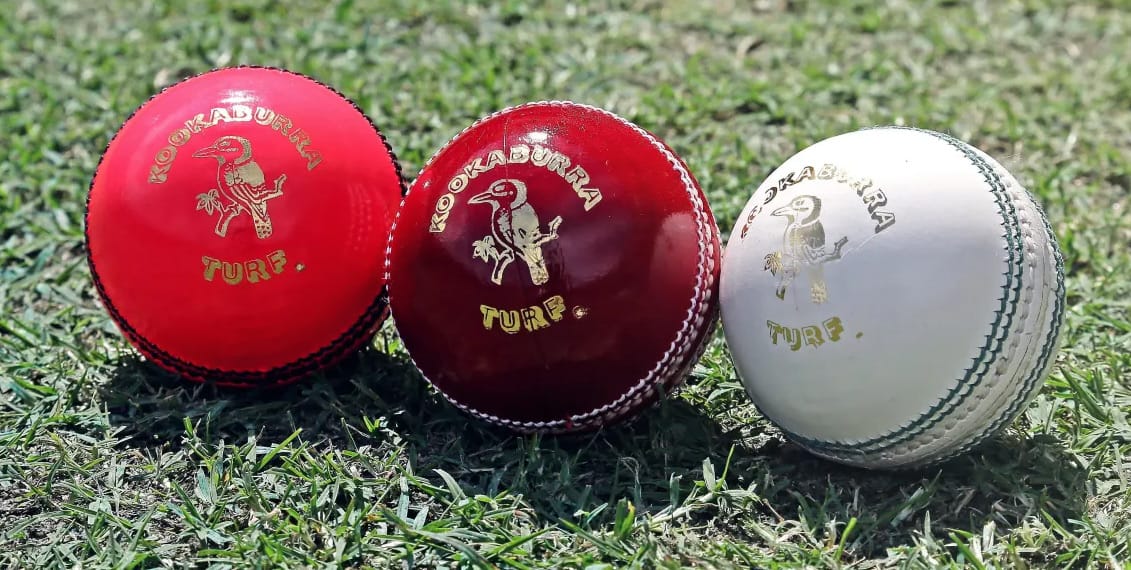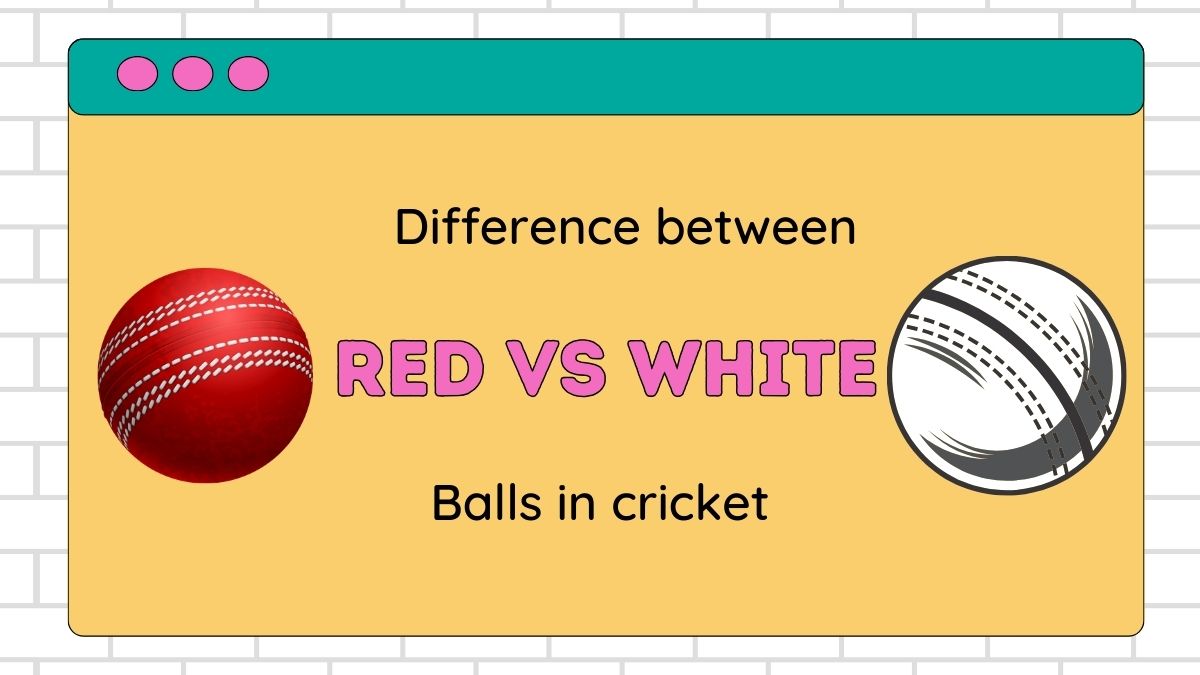In the world of cricket, red and white cricket balls play a vital role, but have you ever wondered what sets them apart? Let’s dive into the key difference between red and white cricket balls and why they matter in the game.
Introduction:
Cricket balls are more than just round objects used in a game; they’re the heartbeat of cricket matches. Understanding the distinctions between red and white cricket balls is crucial for both players and fans to appreciate the nuances of the game better.

Construction and Materials:
Red cricket balls are typically made with a core of cork layered with tightly wound string, all encased in a red-dyed leather outer layer.
On the other hand, white cricket balls have a similar core but are covered with a white-dyed leather outer layer. The materials used in both balls affect their performance on the field. For more information, check out the table below:
| Aspect | Red Cricket Balls | White Cricket Balls |
|---|---|---|
| Core Material | Cork | Cork |
| Outer Layer Material | Red-dyed leather | White-dyed leather |
| Visibility | Traditional, but visibility may vary | Enhanced visibility, especially under lights |
| Visibility Aids | None | Colored seams for better visibility |
| Durability | Typically less durable due to the dye | May be more durable due to lighter color |
Visibility and Visibility Aids:
In terms of visibility, red cricket balls are traditional but can be challenging to see under certain lighting conditions. White cricket balls, however, offer enhanced visibility, especially in limited-overs matches. To aid visibility further, colored seams are often used on white balls to make them stand out against the pitch.
Performance Factors:
The performance of cricket balls is influenced by various factors, including swing, seam movement, and spin. Red cricket balls are known for their propensity to swing and seam, while white cricket balls behave differently due to their materials and construction.
Spinners also experience variations in the way the two types of balls respond to their deliveries. For more information, check out the table below:
| Performance Factor | Red Cricket Balls | White Cricket Balls |
|---|---|---|
| Swing | Prone to swing, especially in humid conditions | Swing characteristics may vary depending on conditions |
| Seam Movement | Promotes seam movement, especially when new | Seam movement may be less pronounced compared to red balls |
| Spin | Spinners can extract significant turn | Spin response may differ due to surface and construction |
Playing Conditions and Formats:
In test cricket, red cricket balls are the norm, providing a unique challenge for players over long matches. In limited-over formats like One Day Internationals (ODIs) and Twenty20 (T20) matches, white cricket balls are preferred for their visibility and suitability for shorter game durations. For more information, check out the table below:
| Format | Red Cricket Balls | White Cricket Balls |
|---|---|---|
| Test Cricket | Traditionally used | Used in limited-overs formats |
| Limited-Overs | Not typically used | Preferred for better visibility and durability |
Impact on Strategy and Tactics:
Bowlers and batsmen alike must adapt their strategies based on the type of ball being used. Bowlers need to capitalize on the swing, seam movement, or spin characteristics of the ball, while batsmen must adjust their techniques accordingly to face these challenges.
Different Cricket Ball Comparison: Red Ball vs. White Ball vs. Pink Ball

| Particulars | Red Ball | White Ball | Pink Ball |
| Used In | Test cricket and first-class matches | Limited-overs cricket like ODIs and T20s | Day-night Test matches |
| Weight | 5.5 – 5.75oz (156 – 163g) | 5.5 – 5.75oz (156 – 163g) | 5.5 – 5.75oz (156 – 163g) |
| Circumference | 8.81 – 9in (22.4 – 22.9cm) | 8.81 – 9in (22.4 – 22.9cm) | 8.81 – 9in (22.4 – 22.9cm) |
| Material | Cork core covered in leather | Cork core covered in white leather with a lacquer coating | Cork core covered in pink leather with a lacquer coating |
| Color | Cherry red | White | Pink |
| Behavior | Swings more due to a pronounced seam and leather surface. | Swings significantly more initially due to the lacquer coating but deteriorate faster. | Designed to maintain its color and behavior longer under lights compared to the white ball. |
Read more: Are you interested in learning more about cricket balls? click here
Conclusion:
Now you know the difference between red and white cricket balls. Whether you’re a player or a fan, appreciating how these balls behave on the pitch adds depth to your enjoyment of the game. So, next time you watch a cricket match, keep an eye out for the subtle but significant differences between these two types of balls.
Want to Buy Cricket balls?: Click here
James Paul is a former first-class cricketer and passionate cricket analyst. His decades of experience on the field and his love for the game shape his insights into the strategies and personalities that define world-class cricket.
